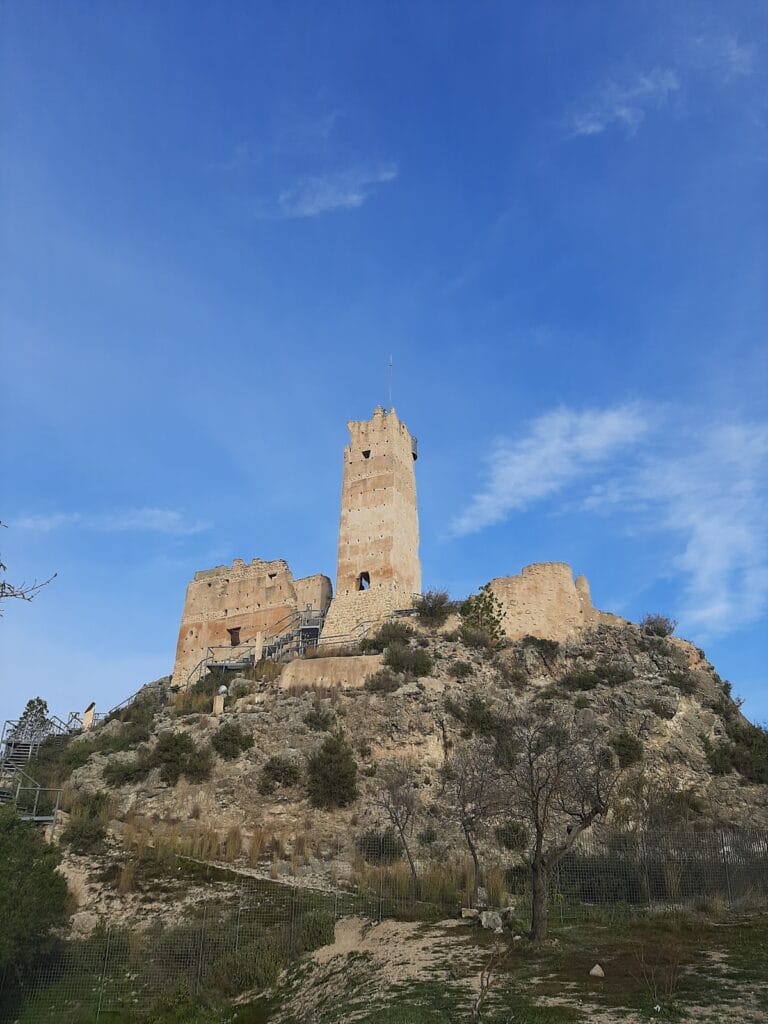Castle of Biar: A Historic Fortress in Alicante, Spain
Visitor Information
Google Rating: 4.4
Popularity: Medium
Google Maps: View on Google Maps
Official Website: turismobiar.com
Country: Spain
Civilization: Medieval European
Remains: Military
History
The Castle of Biar stands on a hill in the town of Biar, located in Alicante province, southeastern Spain. It was originally built in the 12th century by the Almohad dynasty, a Muslim ruling power of the time. The castle’s name comes from the Arabic word “Biar,” meaning “well,” likely referring to the nearby settlement that shared this name.
During the late Reconquista, the castle marked a frontier between the Christian kingdoms of Castile and Aragon and the Muslim territory of Murcia, part of Al-Andalus. In 1245, King Jaime I of Aragon captured the fortress, allowing the Muslim residents to stay temporarily. However, in 1265, a rebellion briefly returned the castle to Muslim control before Christian forces regained it. Afterward, Arnau de Monzó received the castle and began significant reconstruction efforts.
In 1293, King Jaime II of Aragon ordered further fortifications, adding barracks and utility buildings. The castle remained strategically important as a border defense between Aragon and Castile. In 1375, it resisted a siege by Castilian King Pedro I during conflicts between the two kingdoms. Following the 14th-century union of Castile and Aragon, the castle lost its military role and gradually fell into disrepair, though it continued to be inhabited.
In 1931, the Castle of Biar was declared a national historic-artistic monument of Spain. It has been owned by the local municipality for centuries and forms part of the “Route of the Castles of Vinalopó.” Restoration efforts began in the late 20th century, helping preserve the castle in good condition today.
Remains
The Castle of Biar is a concentric fortress featuring a main square keep, or donjon, that rises 19 meters tall. This central tower has three floors and a large observation platform at the top. Built in the 12th century, the keep includes rare Almohad ribbed vaults on its upper levels, among the oldest examples in Spain and North Africa.
The fortress is constructed mainly from stone masonry and rammed earth, known as tapial. The keep notably incorporates this earth technique. Originally, two concentric walls descended the mountain slopes, with a third wall once surrounding the town of Biar. Today, only parts of the second wall remain.
The castle’s southern side faces a steep slope and lacks defensive walls, while the northern side contains two terraced courtyards used for economic and service purposes. The main entrance is located on the eastern side.
Inside, the castle is arranged around a central courtyard. Historical records from the 15th century describe various rooms, including a guardroom, hayloft, a new palace for the governor’s family, pantry, kitchen with fireplace and oven, stable, dining hall, and a church dedicated to Santa María Magdalena and Santa Quiteria.
The palace area features a 12th-century Almohad dome, a rare architectural element in military buildings. Roofs are covered with curved tiles designed to collect rainwater, which drains into a cistern carved into the rock beneath the castle. This cistern still exists today.
Thick stone walls enclose the castle, though only fragments of the second wall survive. The site currently houses an ethnographic museum and the former municipal government building, reflecting its continued use beyond military functions.










